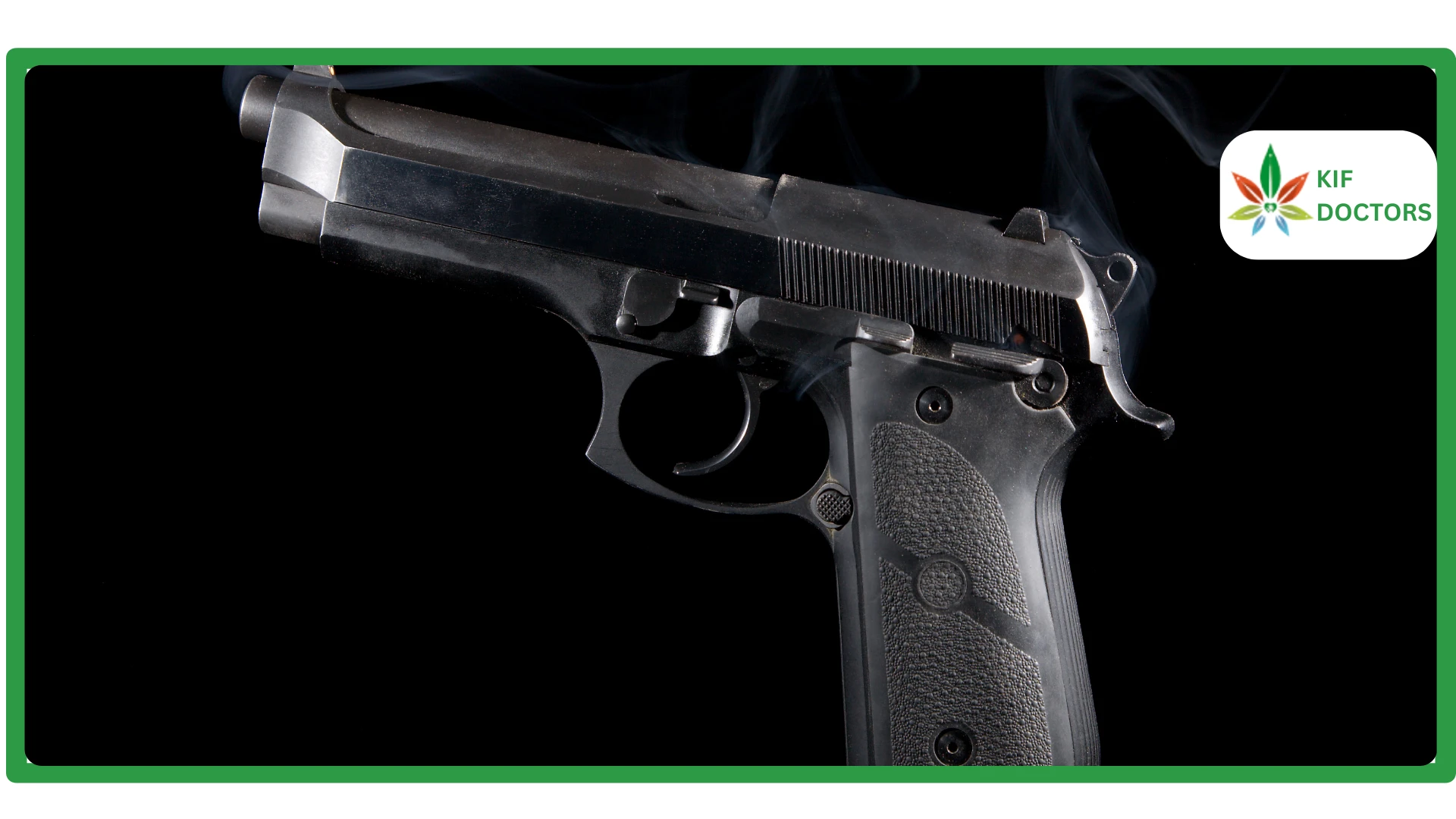Testosterone Replacement Therapy (TRT) does not follow the same formula for everyone. Some men feel better with a low dose. Others need more to see real improvement. The correct dose can increase energy, improve mood, and support muscle and sex drive. A wrong dose may cause problems instead.
Don’t Wait, Reclaim Your Vitality – Click here to Book Your TRT Consultation Now!
In 2025, more men are starting TRT to manage low testosterone. With platforms like The KIF, treatment is now easier to access. You can get your medicine and speak with doctors from home.
Let’s look at how TRT dosage works and how you can find the right amount for your body.
About TRT Dosage
The TRT dose are based on factors such as:
- Hormone Levels
- Symptoms
- Age
- Health
The majority of men start by having testosterone cypionate or enanthate injections. The common initial dose is 100 mg to 200 mg once weekly or every ten days.
This dose is not fixed. It only gives a starting point. Some people may need higher doses. Others might feel better with less. Your response to treatment helps your doctor decide.
Different Forms of Testosterone and Their Dosages
Each method of taking testosterone works differently. The dosage and frequency of taking it is determined by the way your body absorbs the hormone.
Injections (Cypionate, Enanthate, Undecanoate)
Once-per-week injections of cypionate or enanthate are typical. They are typically 100 to 200 mg. Testosterone undecanoate has a longer duration. It is dosed on a 10-12 week basis. The dosage is bigger, approximately 750 to 1000 mg. They are effective, however, rand equire frequent blood tests to prevent side effects.
Topical Gels and Creams
These gels and creams are used daily on the skin. The amount used by most men is 5 to 10 grams, providing 50 to 100 mg of testosterone per day. The dose can be adjusted according to the absorption of the product in your skin.
Patches and Oral Pills
These forms are less common. Patches usually give 4 to 8 mg daily. Oral testosterone undecanoate is taken in doses of 80 to 160 mg daily. These types need a set routine and may not absorb as well as injections or gels.
Pellets
Pellets are placed under your skin every 3 to 6 months. They release testosterone slowly over time. The amount ranges between 600 and 1200 mg depending on your needs. Once inserted, the dose cannot be changed easily.
How to Find the Right TRT Dose
Your dose is not determined by a single number. It is dependent on your blood results, your gut reaction and how your body copes with the hormone. Most doctors do it this way to find the best fit:
1. Start With Blood Tests
Before a patient starts TRT, doctors check the level of total testosterone and free testosterone, estradiol, SHBG, and hematocrit. These tests give you the whole report about your hormone health.
2. Track How You Feel
You may feel exhausted, weak or lack sex drive even when your figures are close to normal. Your lab results along with your symptoms determine the initial dose, as determined by your doctors.
3. Consider Age and Body Type
Young men and older men process hormones differently. Extra body fat may also affect how testosterone changes inside your system.
4. Watch SHBG and Free Testosterone
SHBG influences the amount of testosterone that is available to use. When testing the effectiveness of TRT, free testosterone is more important than total levels.
5. Adjust Slowly Over Time
The majority of doctors start with 100 mg weekly. They increase the dose gradually depending on the test results and symptoms improvement.
Safe TRT Dose Ranges and Lab Goals
To stay safe, TRT doses must fall within tested medical limits. Too much or too little can both lead to unwanted side effects.
1. Total Testosterone: 700–1200 ng/dL
Most men feel best in this range. Going over 1200 can raise your red blood cells too much and stress your heart.
2. Free Testosterone: 15–25 ng/dL
Free testosterone tells how much is active in your system. This number affects energy, mood, and sexual function more than total levels.
3. Hematocrit: Stay Below 52%
Testosterone can increase red blood cell count. If hematocrit rises above 52%, you may be at risk of clots or stroke. Monitoring this is important.
4. Estradiol: Keep Between 20–40 pg/mL
The testosterone turns in to estrogen in your body. When estradiol becomes too high or too low, you may experience swelling, mood changes, or lack of sex drive.
When and How to Adjust TRT Doses
Your needs will change as time passes. Here is how to keep your dose working well:
1. Check for New Symptoms
When you feel your energy level decreasing once more or your sex drive diminishing, then your dose might not be correct anymore. This is an indication that you might be in need of a change.
2. Repeat Blood Tests Regularly
Your hormone levels are typically checked by doctors every 8 to 12 weeks. These tests help indicate that your dose is still effective or requires modification.
3. Watch for Life Changes
Being overweight, older and stressed will all change the way your body utilises testosterone. Those changes may have to be reflected in your dose.
4. Adjust Frequency, Not Just Dose
In case your body responds too strongly to a single shot per week, you can divide the dose into two smaller injections to maintain your levels balanced.
5. Use a Professional Service Like The KIF
Platforms like The KIF give monthly doctor follow-ups. This helps keep your dose updated without needing clinic visits
Common Mistakes With TRT Dosing
Getting the wrong dose can delay results or cause side effects. These mistakes are important to avoid:
1. Using Testosterone Without a Doctor
Unregulated testosterone from illegal sources can be unsafe. Doses are unclear, and the risk of fake products is high.
2. Taking Too Much, Too Soon
Increased doses do not guarantee accelerated results. Excessive levels may lead to estrogen spikes, acne, mood change or thick blood.
3. Ignoring Warning Signs
If you feel unwell, don’t ignore it. Symptoms such as headaches or swelling could indicate that your dose is excessive or that your estrogen is excessive.
4. Refusing to Change Your Dose
Your dose should match your current needs. If things change, and you still use the same amount, results may drop.
5. Forgetting About SHBG and Estradiol
It is not sufficient to pay attention only to the level of testosterone. Even when testosterone appears normal, high estrogen or low SHBG may inhibit progress.
FAQs
1. How Do I Know My Dose Is Too Low?
You may still feel weak or have no change in sex drive. Blood tests and symptoms help your doctor decide.
2. Can I Change My Dose Myself?
No. Changing your dose without help can cause problems. Always ask your provider before making changes.
3. What Dose Should I Start With?
The standard starting dosage in most men is 100 mg per week. The dosage may be adjusted based on your blood tests and symptoms.
4. Will I Need The Same Dose Forever?
Probably not. As your body changes, your dose may need to be updated. Regular checks are important.
5. How Fast Will TRT Start To Work?
You might feel better in 2 to 4 weeks. For full results, it often takes 3 to 6 months.
Conclusion
The most crucial aspect of your TRT plan is your dose. Doing it correctly makes you remain healthy, strong, and balanced. When you have a proper plan, there are no side effects but actual results.
If you’re ready to take control of your testosterone levels, The KIF makes it simple. You get:
- Free consultation
- $249 for your first full plan
- $149 for monthly medicine and support
Visit TheKIF.com today and get started with expert TRT care, made easy.
 Since 2021, Kif offers a streamlined platform to get a medical marijuana card online. We have served more than 45K patients across the United States. Sign Up Now to get the right to use medical cannabis for your health condition without any delay.
Since 2021, Kif offers a streamlined platform to get a medical marijuana card online. We have served more than 45K patients across the United States. Sign Up Now to get the right to use medical cannabis for your health condition without any delay.























